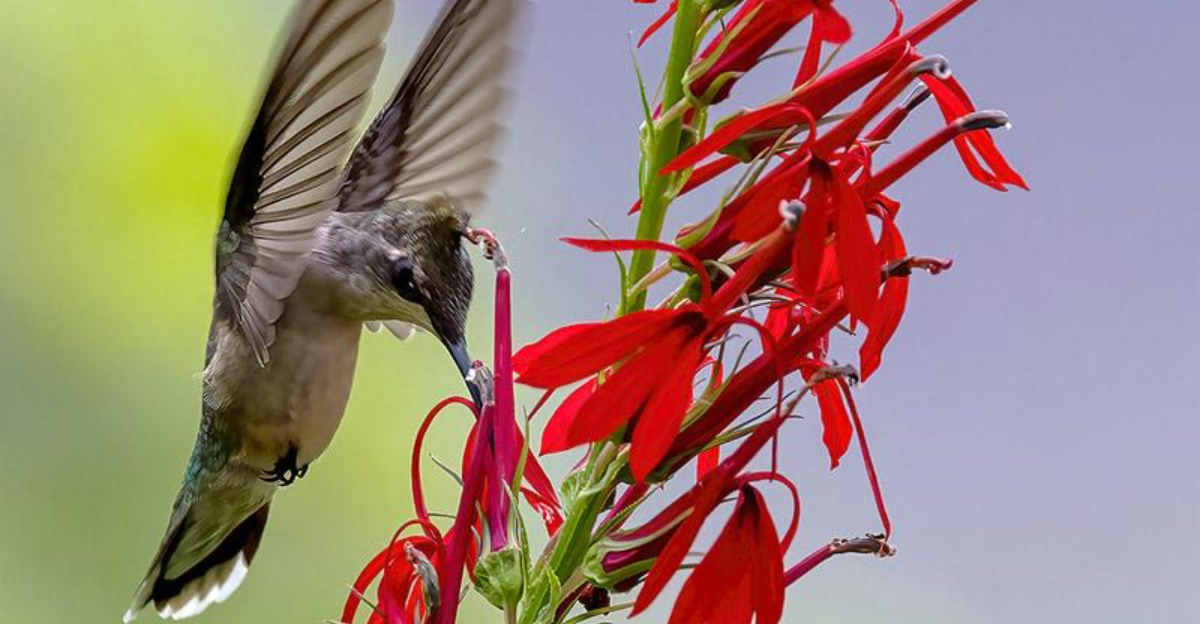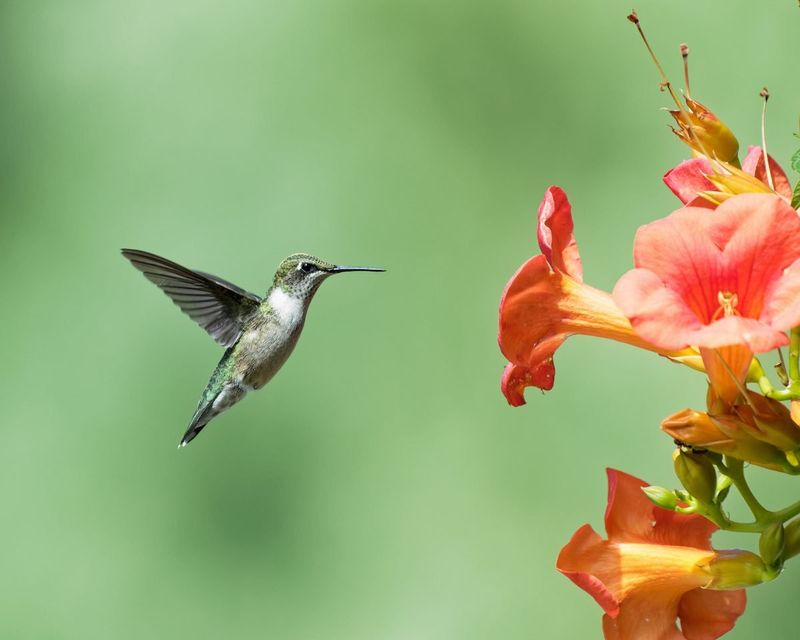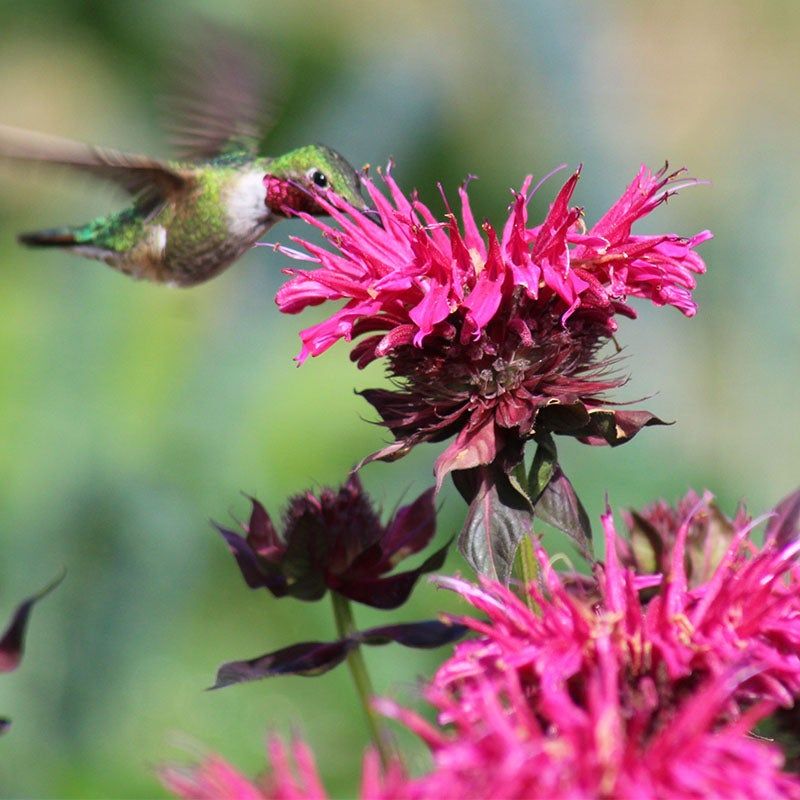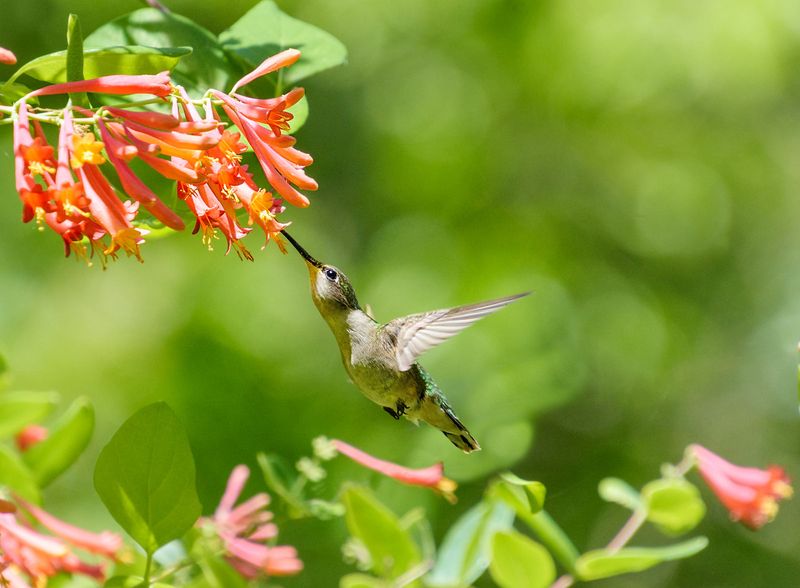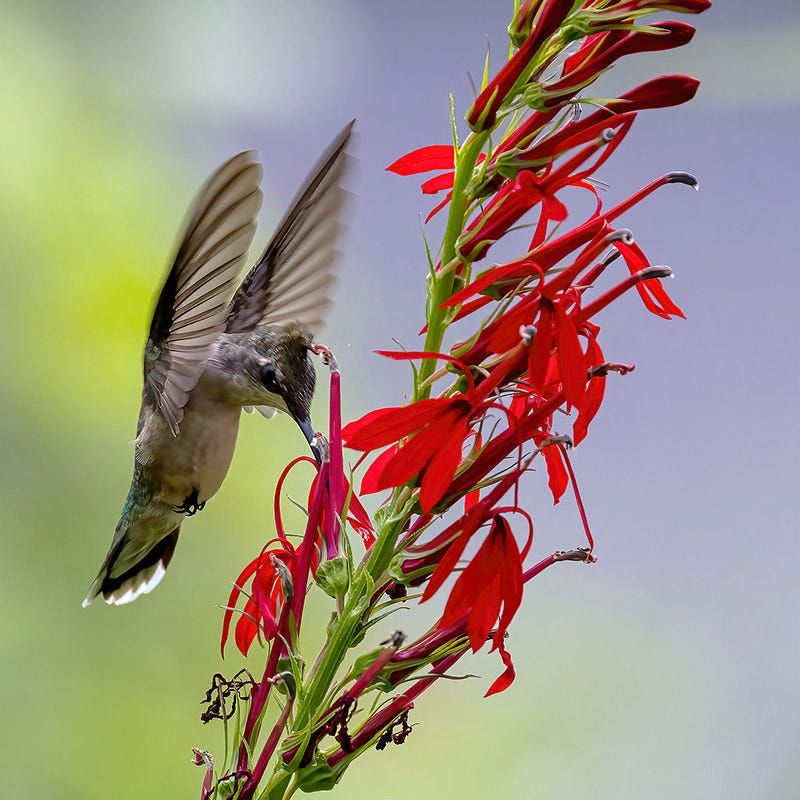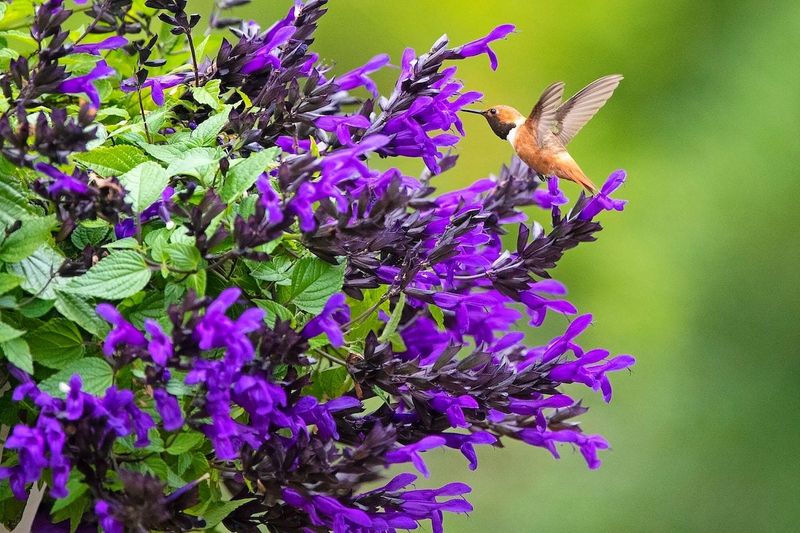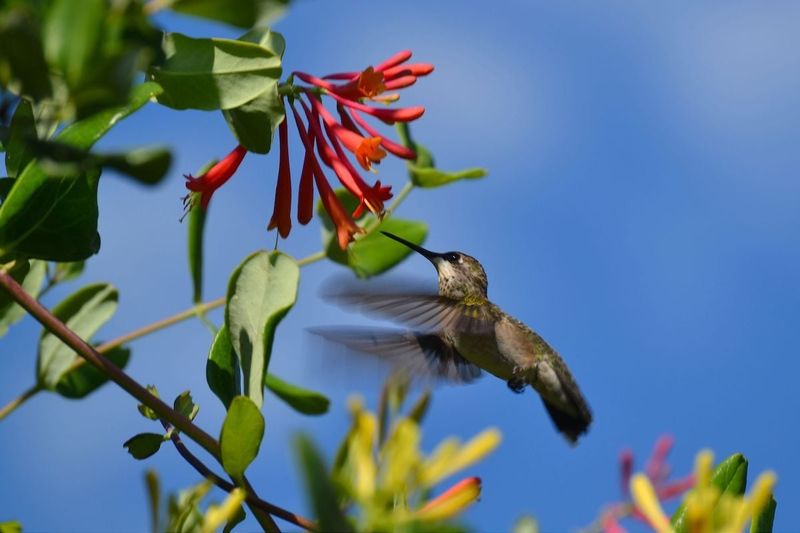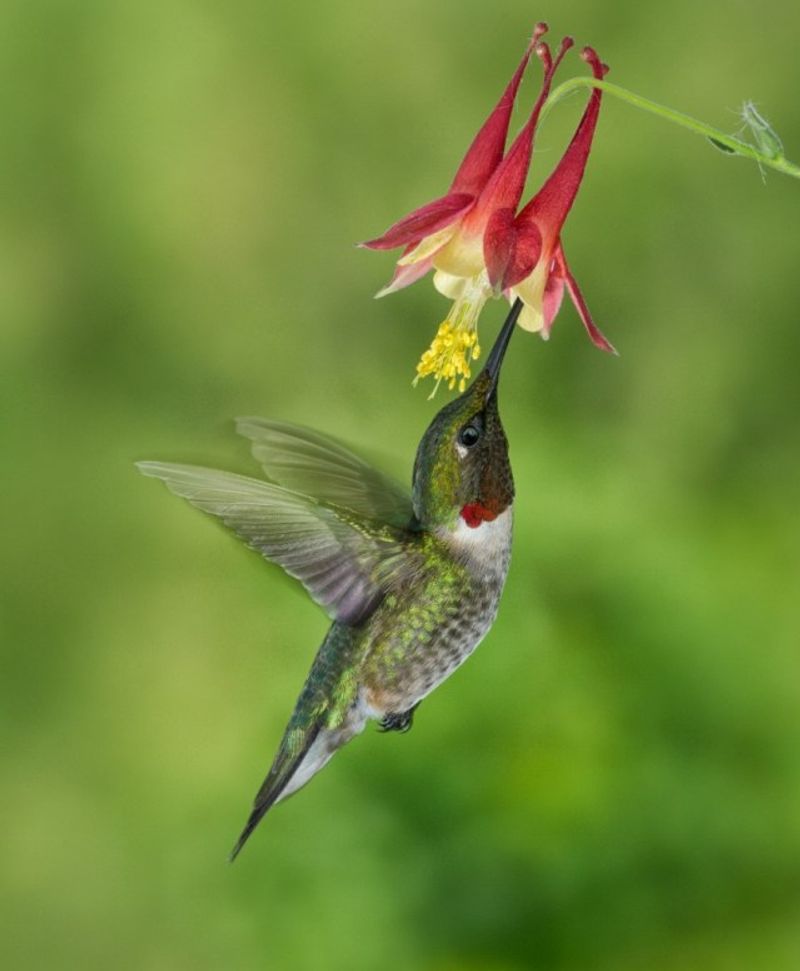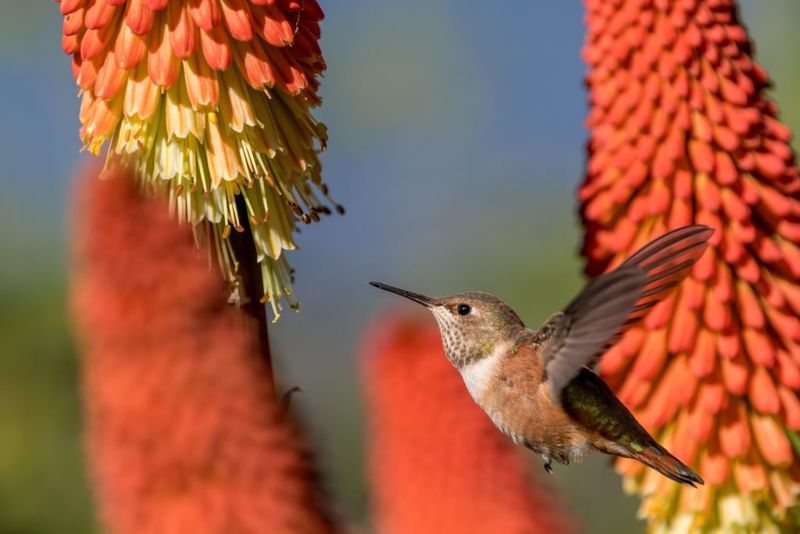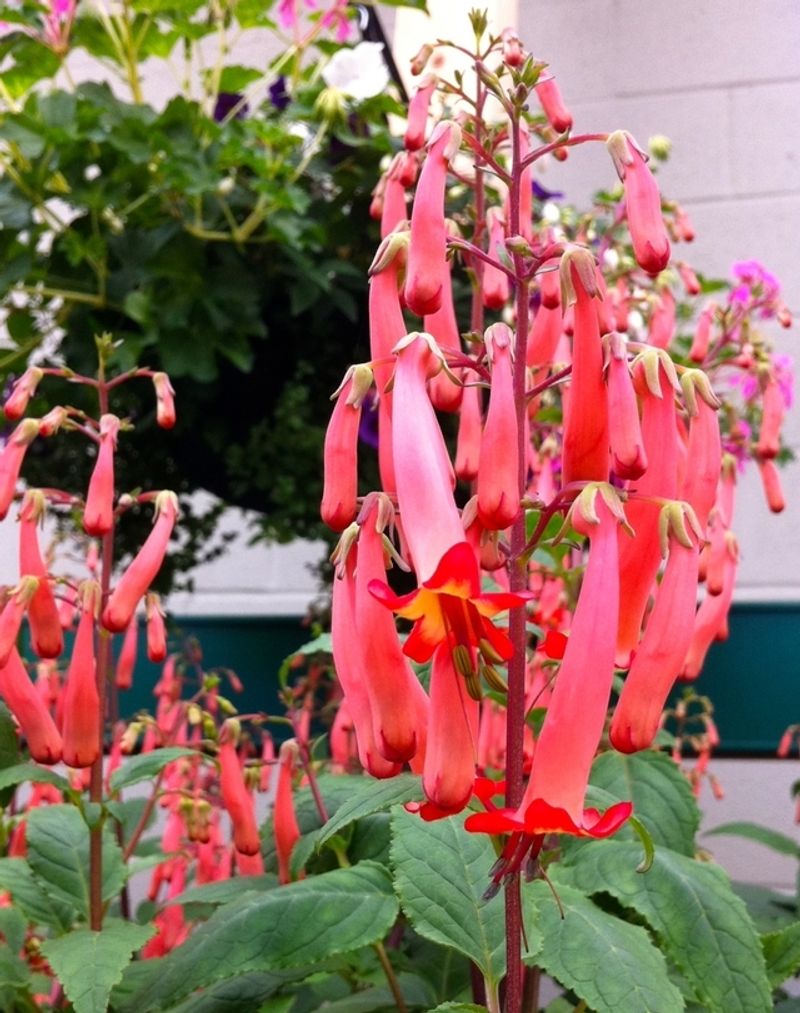When it comes to attracting hummingbirds to your garden, tubular flowers are your best ally. These flowers are not just a visual delight but also a rich source of nectar that these tiny, colorful birds can’t resist.
In this blog post, we explore the top 12 tubular flowers that not only beautify your garden but also make it a haven for hummingbirds. With a mix of vibrant colors and unique shapes, these flowers are a must-have for any hummingbird enthusiast.
1. Trumpet Vine (Campsis radicans)
Trumpet Vine, with its large, trumpet-shaped orange blooms, is a feast for the eyes and a favorite among hummingbirds. These flowers are packed with nectar, making them an irresistible treat.
The vine thrives in sunny locations and can grow vigorously with the right care. Its ability to bloom all summer long ensures a constant supply of nectar for the visiting hummers.
Not only does it attract these delightful creatures, but it also draws other pollinators, adding to the biodiversity of your garden. Its vibrant presence and utility make it a gardener’s delight.
2. Bee Balm (Monarda didyma)
Bee Balm, known for its vibrant red and pink tubular blooms, is a magnet for hummingbirds. These flowers are rich in nectar, offering a sweet reward for visiting pollinators.
Besides hummingbirds, Bee Balm also attracts bees and butterflies, creating a buzzing, lively atmosphere in your garden. It’s deer-resistant, which means it will thrive without becoming a midnight snack.
Plant it in a sunny spot, and enjoy the splash of color it brings to your garden. Its long-lasting blooms make it a staple for those looking to enhance their outdoor space.
3. Coral Honeysuckle (Lonicera sempervirens)
Coral Honeysuckle, a non-invasive alternative to traditional honeysuckles, offers long tubular flowers in striking coral hues. These blooms are a top choice for hummingbirds seeking nectar-rich options.
Blooming from spring to fall, it provides a continuous food source, ensuring your feathered friends frequent visits. This honeysuckle is perfect for trellises, adding vertical interest to your garden design.
Its hardy nature means it thrives with minimal fuss, making it a great choice for both novice and experienced gardeners. Its charm and utility make it a garden must-have.
4. Cardinal Flower (Lobelia cardinalis)
The Cardinal Flower boasts bright red spikes of narrow, tube-shaped blooms that are simply irresistible to hummingbirds. These vibrant flowers thrive in moist areas, making them ideal for rain gardens or pond edges.
Their fiery red hue adds a splash of color, capturing the attention of both humans and birds alike. Cardinal Flowers are not just visually stunning; they are vital for sustaining hummingbird populations during their migration periods.
With their unique beauty and ecological significance, they are a precious addition to any garden.
5. Salvia (especially Salvia guaranitica and Salvia splendens)
Salvia, particularly Salvia guaranitica and Salvia splendens, is favored for its continuous tubular blooms that last from spring until frost. Its vivid blue and red flowers are visually striking and highly attractive to hummingbirds.
Salvias are drought-tolerant, making them a practical choice for low-maintenance gardens. These plants flourish in well-drained soil, requiring little more than occasional watering.
Their ability to resist drought while maintaining vibrant blooms offers both beauty and resilience. Salvia’s enduring presence in the garden ensures hummingbirds have a steady food source.
6. Penstemon (Penstemon digitalis, Penstemon barbatus)
Penstemon, with its clusters of bell-shaped flowers, offers a delightful mix of pink, red, and purple hues. These tubular blooms are a beacon for hummingbirds, providing ample nectar throughout the growing season.
Penstemons are known for their hardiness and ability to thrive in a range of environments. They often attract bees, adding to the lively buzz of a well-balanced garden ecosystem.
With their elegant, upright growth, Penstemons add vertical interest and texture. Their deer-resistant nature makes them a practical, beautiful choice for any garden setting.
7. Trumpet Honeysuckle (Lonicera ciliosa)
Trumpet Honeysuckle, a wild cousin of the Coral Honeysuckle, boasts bright orange tubular flowers that are a hit with hummingbirds. This native plant thrives along woodland edges and fence lines, offering a naturalistic feel to your landscape.
Its blooms appear in clusters, providing abundant nectar to sustain hummingbird populations. The plant is hardy and requires minimal maintenance, making it suitable for naturalized gardens.
By including Trumpet Honeysuckle, you create a hospitable environment for native wildlife, enriching your garden’s biodiversity and beauty.
8. Columbine (Aquilegia canadensis)
Columbine, particularly Aquilegia canadensis, features nodding, tube-like red and yellow flowers that are beloved by hummingbirds. This native North American plant blooms in spring, providing early-season nectar critical for migrating birds.
Its unique flower shape and color palette add whimsical charm to any garden. Columbines thrive in part-shade to full sun, making them versatile additions to diverse landscapes.
Their airy foliage and delicate blooms create a gentle, inviting atmosphere. Incorporating Columbines can enhance your garden’s aesthetic while supporting local wildlife.
9. Fuchsia (Fuchsia magellanica)
Fuchsia magellanica, with its exotic, hanging tubular blooms, provides a splash of pinks and purples that hummingbirds can’t resist. These flowers are perfect for shady garden spots or hanging baskets, adding vertical color to otherwise plain areas.
Fuchsias bloom over long periods, ensuring a steady nectar supply for visiting hummers. Despite their delicate appearance, they are surprisingly robust, handling a variety of conditions.
Fuchsias’ unique beauty and reliable blooms make them a cherished addition to gardens aiming for both style and ecological support.
10. Foxglove (Digitalis purpurea)
Foxglove, known for its tall spires of purple, tubular flowers, creates a striking visual in any garden. These biennial plants self-seed easily, ensuring their presence in your garden year after year without much effort.
Their towering blooms provide nectar for hummingbirds, supporting these vital pollinators throughout their growing season. Foxglove thrives in a variety of soils, adding both height and drama to garden designs.
By incorporating Foxglove, you’re not just adding beauty but also creating a sustainable environment for local wildlife to flourish.
11. Red Hot Poker (Kniphofia uvaria)
Red Hot Poker, with its torch-like blooms, adds vibrant color and drama to sunny gardens. These striking flowers are packed with nectar, making them a favorite for hummingbirds. Known for their ability to thrive in full sun and well-drained soil, they offer both visual appeal and ecological function.
Their unique flower structure and fiery color palette make them a standout choice for gardeners looking to create a dynamic landscape. Red Hot Poker’s robust nature and extended blooming period ensure a consistent nectar source for your feathered visitors.
12. Cape Fuchsia (Phygelius capensis)
Cape Fuchsia, known for its long, curved tubular flowers, offers vibrant red and orange hues that hummingbirds love. Blooming for months, it provides a steady nectar source, essential for these busy birds. Cape Fuchsia thrives in dry soils, making it a resilient choice for challenging landscapes.
Its ability to withstand drought while delivering colorful blooms makes it both a practical and beautiful addition to any garden. This plant’s enduring nature ensures it remains a reliable feature, attracting and supporting hummingbirds throughout its blooming season.
